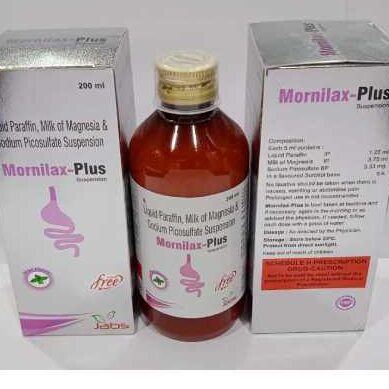Liquid paraffin is a versatile and highly refined mineral oil widely utilized in both medicinal and cosmetic fields. Known for its gentle yet effective properties, liquid paraffin offers benefits ranging from skin hydration to constipation relief. Unlike other liquids such as liquid death water or liquid collagen, liquid paraffin’s unique formulation makes it ideal for sensitive uses, especially where moisture retention and lubrication are needed. It is important to understand its applications, benefits, dosage recommendations, and potential side effects to maximize safety and effectiveness.
Produced by refining petroleum, liquid paraffin is composed of saturated hydrocarbons that are odorless, colorless, and safe for topical and oral use when correctly applied. This product is distinct from paraffin fuels or industrial oils and is often labeled as paraffinum liquidum or mineral oil. In the cosmetic industry, liquid paraffin is prized for its emollient qualities, helping skin retain moisture and maintain softness. Meanwhile, in the medical field, liquid paraffin acts as a lubricant laxative, easing bowel movements without harsh stimulation.
Liquid Paraffin Uses in Skin Care
Liquid paraffin is widely recognized for its exceptional ability to moisturize and protect the skin. When applied topically, it forms a protective barrier that locks in moisture, preventing dryness and flaking. This property makes it especially beneficial for people suffering from eczema, psoriasis, or other dry skin conditions. Unlike some oils that may clog pores or cause irritation, liquid paraffin is non-comedogenic, meaning it won’t block pores, making it safe for all skin types, including sensitive skin.
Many cosmetic products, such as creams, lotions, and ointments, incorporate liquid paraffin to enhance skin hydration. It helps soothe rough or cracked skin by sealing in moisture and supporting the skin’s natural healing process. With its lightweight texture, liquid paraffin absorbs quickly, leaving skin feeling soft and supple without a greasy residue. Additionally, travelers should be aware of TSA liquid rules, as liquid paraffin in liquid form must comply with airport security guidelines when carried onboard.
Liquid Paraffin Uses for Constipation Relief
One of the most common medical uses of liquid paraffin is as a mild, lubricant laxative to relieve constipation. When taken orally, liquid paraffin coats the intestinal walls and stool, softening the stool and easing its passage through the colon. This gentle action helps prevent straining during bowel movements, making it ideal for individuals with chronic constipation, hemorrhoids, or anal fissures. Unlike stimulant laxatives, liquid paraffin does not cause spasms or cramping, providing comfortable relief without discomfort.
Liquid paraffin is especially helpful for people who experience constipation due to a dry stool consistency or decreased bowel motility. It is often recommended alongside dietary changes, such as increasing fiber and fluid intake, or as part of a clear liquid diet during medical procedures. However, proper dosing is essential; excessive use of liquid paraffin can interfere with nutrient absorption or cause unwanted side effects. Always consult a healthcare professional before starting any internal use of liquid paraffin.
Dosage, Safety, and Side Effects of Liquid Paraffin

The dosage of liquid paraffin depends on its intended use. For skin care, it can be applied liberally as often as needed to maintain moisture and soothe dryness. When used as a laxative, the typical oral dose should be followed precisely according to medical advice, usually ranging from a few milliliters to higher amounts depending on severity. Overuse can lead to side effects such as leakage, abdominal discomfort, or impaired absorption of fat-soluble vitamins like A, D, E, and K.
Although liquid paraffin is generally safe, some people may experience mild allergic reactions or skin irritation when applied topically. Internal use also carries risks such as aspiration pneumonia if liquid paraffin is accidentally inhaled, particularly in elderly or bedridden patients. It is crucial to differentiate liquid paraffin from other products like liquid bandage or liquid herbal incense, which have entirely different uses and safety profiles. Pregnant women, children, and individuals with pre-existing health conditions should always seek medical advice before using liquid paraffin.
Liquid Paraffin in Modern Lifestyle and Industry
Beyond personal health and skin care, liquid paraffin has industrial applications due to its lubricating and protective qualities. It is used in machinery maintenance, pharmaceutical manufacturing, and even in food-related industries where non-toxic lubricants are necessary. Despite the rise of trendy “liquid” products like liquid iv hydration mixes, liquid death water, or liquid chlorophyll, liquid paraffin remains a steadfast staple with proven benefits.
For travelers and everyday users alike, understanding TSA liquid rules is important when carrying liquid paraffin. Since it is a liquid, restrictions on container size and packaging apply during flights. Awareness of these regulations ensures hassle-free travel while continuing to benefit from liquid paraffin’s therapeutic uses. The product’s adaptability and safety make it a trusted choice across many sectors, from healthcare to cosmetics and beyond.
Conclusion
Liquid paraffin is an invaluable product known for its dual role in skin care and constipation relief. Its ability to hydrate, protect, and lubricate makes it an essential component in many personal care and medical formulations. While highly effective, liquid paraffin must be used responsibly, with attention to proper dosage and safety precautions. Whether you are seeking relief from dry skin or struggling with constipation, liquid paraffin offers a gentle, reliable solution. Always consult healthcare professionals to ensure it suits your individual needs and conditions.
Frequently Asked Questions
What is liquid paraffin used for?
Liquid paraffin is commonly used to moisturize dry skin and as a lubricant laxative to relieve constipation effectively.
Is liquid paraffin safe for daily skin use?
Yes, it is safe for daily use on the skin and helps maintain hydration without clogging pores or causing irritation.
How much liquid paraffin should I take for constipation?
Dosage varies by individual; always follow medical guidance to avoid side effects and ensure safe use.
Can liquid paraffin cause side effects?
Some users may experience mild skin irritation or digestive discomfort if liquid paraffin is overused or misused.
Is liquid paraffin the same as vaseline?
No, liquid paraffin is a liquid mineral oil, whereas vaseline is a semi-solid petroleum jelly used for different purposes.
Can I take liquid paraffin during pregnancy?
Consult your healthcare provider before using liquid paraffin internally during pregnancy for safety.
What’s the difference between liquid paraffin and liquid iv?
Liquid paraffin is a mineral oil used for skin and digestive issues, while liquid iv is a hydration supplement.
How does liquid paraffin compare to liquid collagen or liquid chlorophyll?
Liquid paraffin moisturizes and lubricates, whereas liquid collagen and chlorophyll support other health and beauty functions.
Are there TSA liquid rules for carrying liquid paraffin on flights?
Yes, liquid paraffin must comply with TSA liquid limits when transported by air.
Can liquid paraffin interact with other medications or diets like a clear liquid diet?
Always consult a healthcare professional about possible interactions before combining liquid paraffin with other treatments or diets.
You may also read: What Is Make Market Diamond Art?



